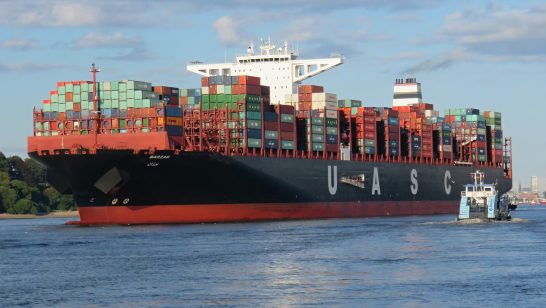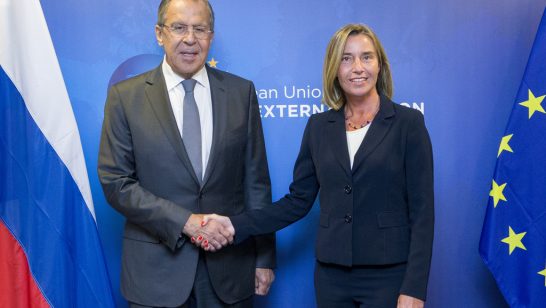
The interdiction and forced seizure by Russia of three Ukrainian navy vessels attempting to enter the Sea of Azov have focused international attention on the region where tensions have been brewing for some time.
With the release of the film “Crimea Bridge: Made with Love” earlier in November, it would have appeared that Russia has scored another success in its conflict with Ukraine. The milestone of completing the Crimean Bridge was significant, as it has injected further security challenges to an already complex situation. Through connecting the annexed peninsula to the Russian mainland, Moscow has monopolised control of ships sailing through the Kerch Strait to the Sea of Azov, and created a de facto blockade of the ports of Mariupol and Berdiansk. These actions are designed to undermine the economic viability of Ukraine, deter future foreign investment, and erode confidence in its own self-sufficiency. Moscow is also using the blockade to force concessions from Kyiv to loosen its own blocks on Crimea. These actions look to have raised Moscow’s negotiation position, but “love” is the last thing the Kremlin should expect in return. As the economic, security, and political implications emerge, European policy makers will have to formulate a new approach, including considering additional sanctions, to counter Russian aggression. As the EU surveys its options, an analysis shows impotence of external actors to stop Russia, but also reveals potential pressure points for Brussels to exploit based on Moscow’s faulty strategic calculations.
Domestically, gains for Russia are two-fold. The primary advantage and existential purpose of the Crimean Bridge is to reduce an expensive logistical burden. By switching to road freight, the Kremlin will no longer have to fly and ship goods into Crimea via Krasnodar Krai. The state budget which has been taxed by this logistical necessity since 2014 will gain substantial financial relief. The second and less convincing advantage for President Putin is the shameless promotion of a foreign policy victory to his domestic audience. But the propaganda value remains to be seen, especially in the context of the current escalation.
Externally, the blockade of the Sea of Azov has given Russia means for a further strangulation of Ukrainian economy. Control of the Kerch Straight has enabled Russia to slow maritime trade and impede international shipping. Since the end of May 2018, Russian naval patrols have been halting and harassing Ukrainian (as well as third-party) state cargo vessels. In addition to controlling traffic, and therefore the pace of commerce into Mariupol and Berdiansk, the technical parameters of the Crimean Bridge currently prohibits Panamax class ships[1] from entering the Kerch Strait. Subsequently, Azov ports have lost 30% of their maritime cargo due to lower bridge clearances.
With Ukraine’s loss of the Kerch Straight and no naval assets capable of altering the military dynamic, opening a second front and confronting Russia militarily would be inadvisable. While the advantages of better logistics and economic coercion applied against Ukraine appear to be a Russian gain, they do not trump the groundswell of disadvantages Moscow could face.
If history is any indication of the future, the natural environment surrounding the Crimean Bridge will work to Russia’s detriment. The prevalence of geologically unsuitable conditions means that expensive and lengthy work to secure the structural integrity of the bridge is to be expected. It is noteworthy that the only bridge ever built connecting Crimea to the mainland, in 1944, collapsed after only six months. Undoubtedly, this looms as an uncomfortable political and engineering omen for Moscow in their long-term budgeting.
Against the backdrop of a toxic domestic political environment marked by the increase in retirement age and a crisis over the autocephaly of the Ukrainian Orthodox Church, the Kremlin can hardly redirect the discontent of its denizens through a new crisis. This will become more painful for Russia, both politically and economically, with the spectre of fresh EU sanctions linked to the Azov Sea blockade. The introduction a nonbinding resolution by the EU parliament in October 2018, change of Presidency from a sympathetic Austria to a critical and Black Sea-focused Romania in early 2019, and the international wave of criticism over the seizure of Ukrainian vessels only raised the prospect. Any new sanctions would be a personal blow to President Putin’s ambitions. They would affect the delicate covenant between President Putin and the ruling oligarchs whose patience to withstand protracted assets freezes and travel restrictions is not limitless.
Russia’s denial to third-party access to the Sea of Azov is unlikely to be extended. It is conceivable that, given the position of littoral NATO states of the Black Sea, further obstruction of lanes leading to Ukrainian ports could result in military confrontation. In the event of conflict with NATO, Russia’s escalation domination would be tested. As it currently holds this military advantage over Ukraine in the Donbass and the Crimean Peninsula, it is unlikely they would risk losing it against NATO in the Black Sea. So far, Russia’s intimidation has only steeled collective solidarity. This is significant as experience confirms that nothing distresses President Putin more than international unity. Ironically, his strategy is pushing Ukraine closer to its European and NATO partners. This latest miscalculation proves that the most damaging outcome for Russia may in fact be the Western-supported reinvigoration of Ukraine.
At a time when the Kremlin has been searching to restore a semblance of normality with Brussels, its actions have brought just the opposite. The costs of sanctions connected with the Azov Sea blockade is likely to exceed any economic saving on the Crimean bridge. As the broader Crimean sanction regime has shown, they are painful and vexing to remove. The domestic political “bonus” of the physical reunification of Crimea to Russia is too likely evaporate with future retaliation measures, and conversely extend Moscow’s global pariah status.
Russia’s cardinal sin has been to cement Western support for and push Ukraine to obtain self-sufficiency. Consequently, in a litany of President Putin’s tactical blunders, the Sea of Azov gambit represents another one. If Ukraine is to have any fighting chance at reform and defending itself, the EU and its partners must follow through in checking Russian advances. The Crimean Bridge might have been “made with love”, but it may ultimately prove to be more painful than expected for the Kremlin.
The opinions articulated above also do not necessarily reflect the position of the European Leadership Network or any of its members. The ELN’s aim is to encourage debates that will help develop Europe’s capacity to address pressing foreign, defence, and security challenge.
[1] Panamax vessel can’t be longer than 294,13 m (965 ft), wider than 32,31 m (106 ft) and her draught can’t be more than 12,04 m (39.5 ft). These vessels have an average capacity of 65,000 DWT, and are primarily used in transporting coal, crude oil and petroleum products.



